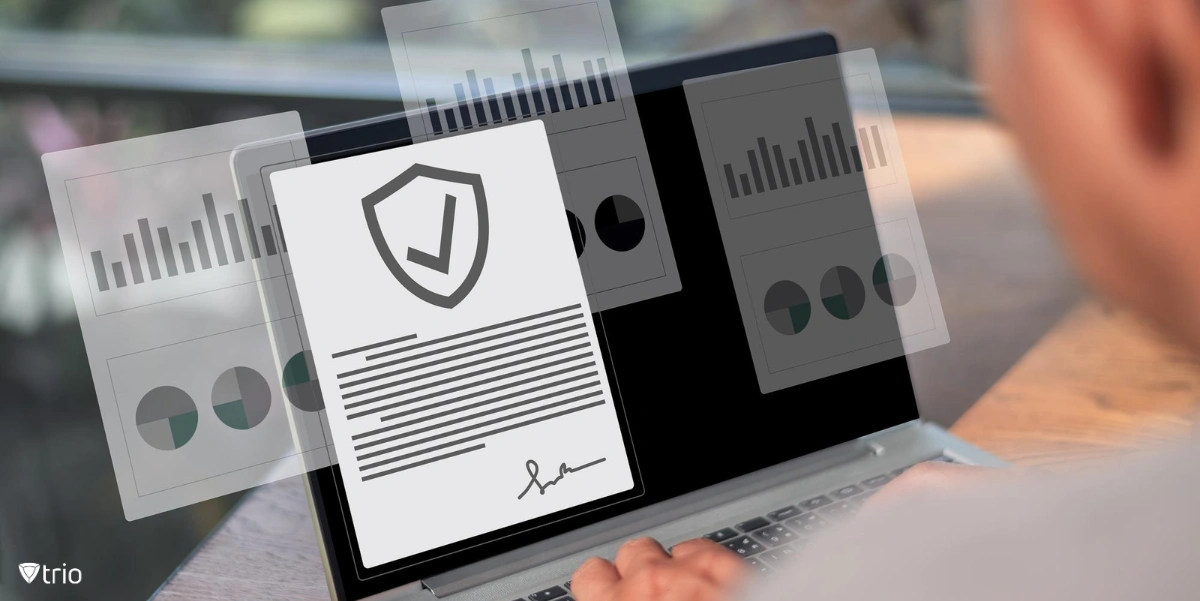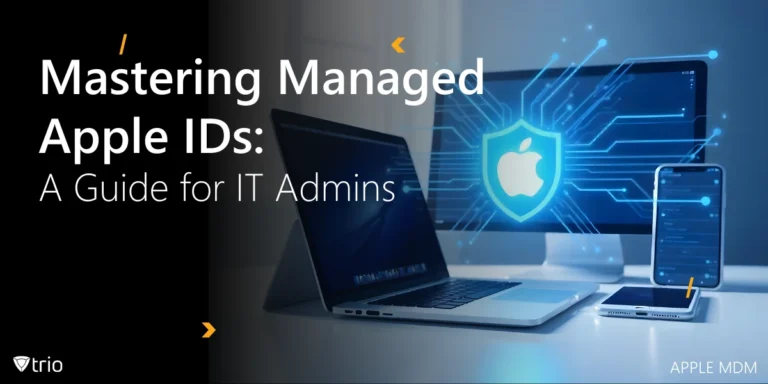A Data Protection Impact Assessment (DPIA) acts as a springboard for both legal compliance and improved data privacy practices within your organization. By identifying and mitigating data risks early on, you can design projects with privacy in mind (“data protection by design”) and effectively communicate these efforts to stakeholders. This not only builds trust with users and avoids hefty fines, but also streamlines operations by minimizing unnecessary data collection and ensuring efficient data flows. Overall, DPIAs are a cost-effective way to proactively safeguard data privacy and ensure your organization’s GDPR compliance. Read on to discover how DPIAs can transform your data protection practices from a burden to a powerful tool for success.
What is a Data Protection Impact Assessment (DPIA)?
A DPIA is a systematic process designed to identify and minimize the risks associated with processing personal data. Think of it as a proactive risk assessment focused specifically on data privacy. Here’s how a DPIA plays a crucial role in data protection:
Identifying Risks: It helps organizations pinpoint potential threats to personal data during processing activities. These threats could be data breaches, unauthorized access, or even unintended profiling based on the data collected.
Minimizing Risks: Once risks are identified, a DPIA outlines steps to mitigate them. This might involve implementing stronger security measures, anonymizing data where possible, or minimizing the amount of data collected in the first place.
Demonstrating Compliance: For certain types of high-risk data processing as outlined by regulations like GDPR article 35, conducting a DPIA is mandatory. Having a documented DPIA demonstrates your organization’s commitment to data protection and helps ensure compliance.
Building Trust: By proactively managing data privacy risks, DPIAs can foster trust with individuals whose data you handle. This transparency demonstrates your organization’s respect for data privacy, which can be a significant competitive advantage.

Benefits of Using a DPIA
DPIAs offer a wealth of benefits for organizations. They ensure compliance with data protection regulations, reducing the risk of fines and legal trouble. By demonstrating a commitment to data privacy through a DPIA, you can build trust with customers and employees, giving you a competitive edge. Additionally, DPIAs help minimize data breaches by proactively identifying vulnerabilities. They also promote stronger risk management and encourage organizations to collect data proportionately and only when truly necessary. Overall, DPIAs are a valuable tool for organizations to navigate the world of data privacy responsibly.
When Must You Conduct a DPIA?
While DPIAs aren’t everyday occurrences, there are some situations that require a DPIA. The main trigger for a DPIA is processing that is considered “likely to result in a high risk to the rights and freedoms of individuals.” Here’s when a DPIA becomes legally mandatory:
- Handling Sensitive Data on a Large Scale: Information like race, ethnicity, health records, or political opinions is considered “special category data” due to its high privacy risk. Processing large amounts of this data triggers a mandatory DPIA.
- Systematic Monitoring in Action: Constantly monitoring public areas with CCTV cameras or engaging in extensive profiling that significantly impacts individuals requires a DPIA.
- The Power of New Technologies: Innovative technologies like facial recognition or genetic analysis come with inherent privacy risks. If you’re using these technologies, especially combined with other high-risk factors, a DPIA is mandatory.
While the situations mentioned above are generally applicable under regulations, specific national data protection laws may have additional triggers for DPIAs. It’s important to consult the relevant data protection authority in your region for any additional requirements.
Remember: Even if a DPIA isn’t strictly mandatory, it’s always good practice to conduct one whenever you’re unsure about the potential risks of a data processing activity. This demonstrates a proactive approach to data privacy and helps ensure compliance with broader data protection principles.

What to Include in a DPIA: Key Elements for a Strong Assessment
A well-structured DPIA serves as a roadmap for identifying and mitigating risks associated with data processing. Here’s a breakdown of the key elements required for a comprehensive DPIA:
Description of Processing Activities
Clearly outline the specific ways your organization will be collecting, storing, using, and sharing personal data. This includes details about the data types involved, processing purposes, and data retention periods.
Assessment of Necessity and Proportionality
Explain why processing the data is necessary for your stated purposes and demonstrate that the amount of data collected is proportionate to those needs. Consider if there are less intrusive ways to achieve your goals.
Identification of Risks
Analyze the potential risks to individuals’ rights and freedoms arising from your data processing activities. This could include risks of unauthorized access, data breaches, discrimination, or loss of control over personal data.
Planned Mitigation Measures
Outline the specific steps you will take to address the identified risks. This might involve implementing stronger security controls, data anonymization techniques, or minimizing data collection to only what’s strictly necessary.
Data Protection by Design and Default
Demonstrate how your project incorporates “data protection by design” principles, meaning privacy considerations are embedded from the outset. Additionally, explain how your systems are configured with data protection in mind by default (e.g., privacy-friendly settings pre-selected).
Consultation
Depending on the nature and risk level of your processing activities, consider consulting with relevant stakeholders like data protection officers or supervisory authorities.
Monitoring and Review
Establish a plan to monitor the effectiveness of your mitigation measures and review the DPIA regularly, especially if your data processing activities change.
By including these key elements, your DPIA becomes a valuable tool for ensuring data privacy compliance and demonstrating your organization’s commitment to responsible data handling. Use this [data protection impact assessment (DPIA) template] to get an idea on how to start.
Who Should Implement a DPIA? DPIA Implementation Within Your Organization
The responsibility for conducting a DPIA ultimately falls on the data controller. This is the entity that determines the purposes and means of processing personal data. However, the actual implementation of a DPIA might involve a collaborative effort within the organization. Here’s who can be involved:
Data Protection Officer (DPO): If your organization has a designated DPO, they can play a crucial role in advising on the need for a DPIA, guiding the process, and ensuring the final assessment aligns with data protection regulations.
Project Teams: The individuals directly involved in the data processing activity (e.g., IT department, marketing team) will possess valuable insights into the specific data flows and potential risks. Their knowledge is key to a comprehensive DPIA.
Legal Department: Consulting with legal counsel can be beneficial, especially for complex data processing activities or when navigating the specific requirements of data protection regulations.
In essence, while the data controller holds the ultimate responsibility, a well-coordinated effort involving relevant departments can ensure a robust and effective DPIA.
The Purpose of a DPIA
A DPIA serves a critical purpose in safeguarding personal data. It’s essentially a proactive risk assessment specifically focused on data privacy. Here’s how DPIAs work:
- Identify potential threats
- Mitigate risks before they strike
- Build a foundation of privacy
By proactively identifying and mitigating risks, DPIAs empower organizations to:
Ensure Compliance: Conducting a DPIA demonstrates your commitment to data protection regulations like GDPR. This can help avoid hefty fines and legal issues.
Build Trust with Stakeholders: Transparency in data handling fosters trust with customers and employees. Demonstrating you take data privacy seriously can be a significant competitive advantage.
Minimize Data Breaches: Identifying and addressing vulnerabilities upfront reduces the risk of costly data breaches that damage your reputation and finances.
In essence, DPIAs are not just a compliance tool, but a strategic mechanism for organizations to proactively manage data privacy risks and build trust with stakeholders.
Conclusion: The Value of DPIAs in Data Protection
Data Protection Impact Assessments (DPIAs) have emerged as a cornerstone of responsible data handling in today’s privacy-conscious landscape. By proactively identifying and mitigating risks associated with personal data processing, DPIAs offer a wealth of benefits. In essence, DPIAs are a cost-effective way to safeguard data privacy and build trust.
See Trio in Action: Get Your Free Trial Now!
Trio MDM – Your GDPR-Compliant Data Management Partner
Considering using an MDM solution as your partner in navigating the complexities of GDPR compliance? Trio’s Mobile Device Management (MDM) solution is at your service! Trio’s MDM is built with data privacy in mind, ensuring your organization adheres to the strictest regulations while empowering a mobile workforce. Try Trio’s free demo today!




